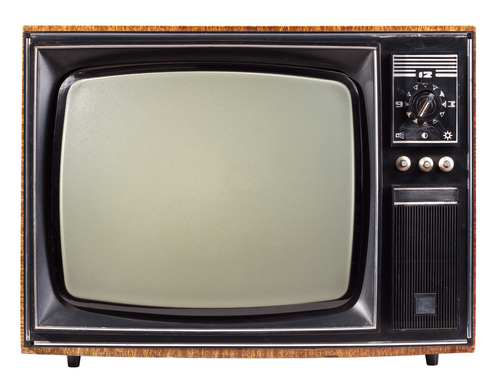|
Hero Rides Again, With Big Boots to Fill
Posted on: 07/03/13
Hero Rides Again, With Big Boots to Fill
In ‘The Lone Ranger,’ Tonto Takes Center Stage There are moments when this approach — which combines fussy, facetious knowingness with naïve, omnivorous enthusiasm — pays off nicely. The main action of “The Lone Ranger” takes place in a fantastical 1869 Texas, but it’s framed by scenes set in San Francisco in 1933, the year the Lone Ranger made his radio debut. As the half-built Golden Gate Bridge looms in the background, a young boy in cowboy duds and a black mask wanders into a Wild West fairground attraction, where he gazes on a taxidermied buffalo and grizzly bear, and also on an elderly American Indian with a dead crow on his head. A brass plate identifies him as “The Noble Savage in his Native Habitat.” The boy comes to know him as Tonto, and the rest of us recognize him, even under heavy prosthetic wrinkles, as Johnny Depp. Turning an aging, weary Tonto into a somewhat unreliable narrator signals that we are in a world of tall tales and strange myths, a universe of stories that fed the imaginations of many American children in the early and middle decades of the last century and that may strike their descendants as archaic and a little embarrassing. Sturdy western archetypes sit uncomfortably close to ugly ethnic stereotypes, and “The Lone Ranger” tries to imagine a wholesome, inclusive version of the western while reviving the time-tested touchstones of the genre. The result is a frantic grab bag of plots and themes, a semester-long Westerns 101 college course crammed into two and a half hours and taught by a professor whose lecture notes were rearranged by a gust of wind on his way to class. The wide-open spaces of Monument Valley (which is not really in Texas, but never mind) are heavily populated with familiar characters: vengeful Comanches (their ancient chief is played by Saginaw Grant); an unscrupulous railroad tycoon (Tom Wilkinson); a blond-maned cavalry officer (Barry Pepper); a varminty, snaggletoothed outlaw (William Fichtner); a sharp-tongued madam (Helena Bonham Carter); and a stoical pioneer mom (Ruth Wilson), whose husband (James Badge Dale) is a Texas Ranger named Dan Reid. The Lone Ranger is Dan’s brother, John (Armie Hammer), an idealistic government lawyer who arrives in town armed with a copy of John Locke’s “Two Treatises of Government” and whose belief in the rule of law will be sorely tested. John, who does not carry a gun, carries a torch for his brother’s wife and eventually acquires a mysterious white horse, the “William Tell Overture” and the moniker kemo sabe, bestowed by his newfound sidekick, Tonto. Tonto also persuades him to cover his eyes, which generates a new spin on the old catchphrase: “What’s with the mask?” There is no doubting Mr. Verbinski’s appreciation of film history. He has seen and studied, at a minimum, “The Searchers,” “Once Upon a Time in the West,” “The General” and the Road Runner cartoons of Chuck Jones. (As well as his own “Rango,” a much better western than this one.) All of these influences and more are put to hectic, intermittently inspired use. Some of the action sequences combine the kinetic wit of classic cartoons with the inventive rigor of Buster Keaton movies, and Mr. Depp’s blend of gravity and goofiness saves the day, or at least alleviates the tedium, on several occasions. In the end, though, “The Lone Ranger” can’t quite pull off the daredevil feats it has assigned itself. This is an ambitious movie disguised as a popcorn throwaway, nothing less than an attempt to revise, reinvigorate and make fun of not just its source but also nearly every other western ever made. In trying to balance grandiosity with playfulness, to lampoon cowboy-and-Indian clichés while taking somber account of a history of violence, greed and exploitation, it descends into nerve-racking incoherence. Atrocities are followed by jokey riffs and sight gags, and what links them is not a creative sensibility (as would be the case in a Quentin Tarantino movie) but a carnival barker’s desperate need to hold on to a distracted audience’s attention. Look, kids, a man eating another man’s heart! A horse in a tree! A genocidal massacre! Bunny rabbits with sharp teeth! “Who was that masked man?” is a less relevant question than “What on earth were you thinking?” “The Lone Ranger” is rated PG-13 (Parents strongly cautioned). The violence, while frequently stylized and carefully edited, is actually more intense and nasty than the rating would suggest. The Lone Ranger Opens on Wednesday nationwide. Directed by Gore Verbinski; written by Justin Haythe, Ted Elliott and Terry Rossio; director of photography, Bojan Bazelli; edited by Craig Wood and James Haygood; music by Hans Zimmer; production design by Jess Gonchor and Mark McCreery; costumes by Penny Rose; visual effects supervisors, Tim Alexander and Gary Brozenich; produced by Mr. Verbinski and Jerry Bruckheimer; released by Walt Disney Pictures. Running time: 2 hours 29 minutes. WITH: Johnny Depp (Tonto), Armie Hammer (John Reid, a k a the Lone Ranger), Tom Wilkinson (Latham Cole), William Fichtner (Butch Cavendish), Barry Pepper (Capt. Fuller), James Badge Dale (Dan Reid), Ruth Wilson (Rebecca Reid), Helena Bonham Carter (Red Harrington) and Saginaw Grant (Chief Big Bear). By A. O. SCOTT Published: July 2, 2013 Courtesy of The New York Times COMMENTS
Be the first to post a comment! Post A Comment:

|
.gif)




.jpg)

